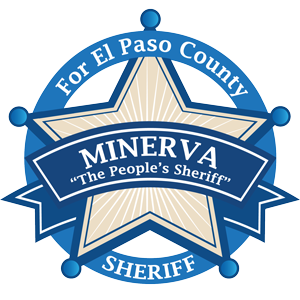Introduction
Education is a cornerstone of community development, influencing economic growth, social stability, and overall quality of life. In El Paso, education reform and funding are crucial issues that impact the city’s future. This blog explores the current state of education in El Paso, focusing on funding challenges, reform initiatives, and the roles of local, state, and federal governments in shaping education policy.
The Current State of Education in El Paso
- Educational Institutions:
- El Paso is home to several school districts, including the El Paso Independent School District (EPISD), Ysleta Independent School District (YISD), and Socorro Independent School District (SISD). These districts serve a diverse student population with varying needs and resources (Minerva4Sheriff)(Minerva4Sheriff).
- The city also hosts higher education institutions such as the University of Texas at El Paso (UTEP) and El Paso Community College (EPCC), which provide opportunities for post-secondary education and workforce development (Minerva4Sheriff).
- Student Demographics:
- El Paso’s student population is predominantly Hispanic, with many students coming from low-income families. This demographic reality presents unique challenges and opportunities for educational institutions to address issues related to language barriers, cultural diversity, and economic disparities(Minerva4Sheriff).
Funding Challenges
- State and Federal Funding:
- Education funding in Texas primarily comes from state and local sources, with additional support from federal programs. However, funding disparities often exist between districts, influenced by property tax revenues and state budget allocations (Minerva4Sheriff) (Minerva4Sheriff).
- El Paso has faced challenges related to adequate state funding, particularly for schools serving low-income and minority students. These funding gaps can lead to disparities in educational resources, facilities, and opportunities (Minerva4Sheriff).
- Local Funding Issues:
- Local funding for schools in El Paso is heavily reliant on property taxes, which can vary significantly across different areas. Schools in wealthier neighborhoods tend to receive more funding, while those in lower-income areas may struggle with limited resources (Minerva4Sheriff).
- Efforts to address these disparities include bond measures and local initiatives aimed at increasing funding for under-resourced schools. These measures often require community support and advocacy to be successful (Minerva4Sheriff).
Education Reform Initiatives
- Improving Educational Equity:
- Ensuring educational equity is a primary focus of reform initiatives in El Paso. This includes addressing disparities in funding, resources, and opportunities to ensure that all students have access to high-quality education (Minerva4Sheriff) (Minerva4Sheriff).
- Programs aimed at closing the achievement gap include targeted interventions, additional support services, and inclusive policies that cater to the diverse needs of students (Minerva4Sheriff).
- Enhancing STEM Education:
- STEM (Science, Technology, Engineering, and Mathematics) education is critical for preparing students for the future workforce. El Paso schools have implemented various initiatives to enhance STEM education, including partnerships with local businesses, higher education institutions, and community organizations (Minerva4Sheriff).
- Initiatives include STEM-focused curricula, extracurricular programs, and access to advanced technology and laboratories. These efforts aim to inspire interest in STEM fields and equip students with relevant skills(Minerva4Sheriff).
- Bilingual and Multicultural Education:
- Given El Paso’s demographic makeup, bilingual and multicultural education is essential. Schools offer programs that support English Language Learners (ELL) and promote bilingualism and biculturalism(Minerva4Sheriff) (Minerva4Sheriff).
- These programs include dual-language immersion, cultural competency training for teachers, and resources for parents to support their children’s education (Minerva4Sheriff).
Role of Local, State, and Federal Governments
- Local Government Initiatives:
- Local government plays a crucial role in supporting education through funding, policy-making, and community partnerships. City leaders and school boards work together to address the specific needs of El Paso’s schools and advocate for necessary resources (Minerva4Sheriff) (Minerva4Sheriff).
- Initiatives include infrastructure improvements, safety measures, and community engagement programs that involve parents and local stakeholders in the education process (Minerva4Sheriff).
- State Government Policies:
- The state government sets education standards, funding formulas, and accountability measures that impact all public schools in Texas. State policies can significantly influence the quality and equity of education in El Paso (Minerva4Sheriff) (Minerva4Sheriff).
- Advocacy for equitable state funding and supportive policies is crucial for addressing the unique challenges faced by El Paso’s schools. State-level reforms can help ensure that all students have access to quality education, regardless of their socioeconomic status (Minerva4Sheriff).
- Federal Government Support:
- Federal programs and funding, such as Title I, support schools with high percentages of low-income students. These funds help provide additional resources, including academic support, health services, and extracurricular activities (Minerva4Sheriff) (Minerva4Sheriff).
- The federal government also plays a role in enforcing educational rights and ensuring that schools comply with laws related to special education, civil rights, and access to education for all students(Minerva4Sheriff).
Community Involvement and Support
- Parental Engagement:
- Parental involvement is critical for student success. Schools in El Paso encourage parental engagement through programs that involve parents in their children’s education, offer resources and workshops, and create opportunities for parents to participate in school activities (Minerva4Sheriff) (Minerva4Sheriff).
- Efforts to engage parents include bilingual communication, flexible meeting times, and culturally relevant programming that addresses the needs and interests of diverse families (Minerva4Sheriff).
- Community Partnerships:
- Partnerships with local businesses, non-profit organizations, and higher education institutions enhance the educational experience for students in El Paso. These collaborations provide additional resources, mentorship opportunities, and real-world learning experiences (Minerva4Sheriff) (Minerva4Sheriff).
- Community involvement also includes volunteer programs, after-school initiatives, and support for school events and activities, fostering a supportive and inclusive educational environment (Minerva4Sheriff).
Conclusion
Education reform and funding are critical issues for the future of El Paso. Addressing funding disparities, enhancing educational equity, and implementing innovative programs are essential for providing all students with access to high-quality education. The roles of local, state, and federal governments, along with community involvement, are vital in shaping a robust and equitable education system in El Paso. By working together, the community can ensure that every child has the opportunity to succeed and contribute to the city’s prosperity.
For more information on education reform and funding initiatives in El Paso, visit Minerva4Sheriff.com.





Leave a Reply